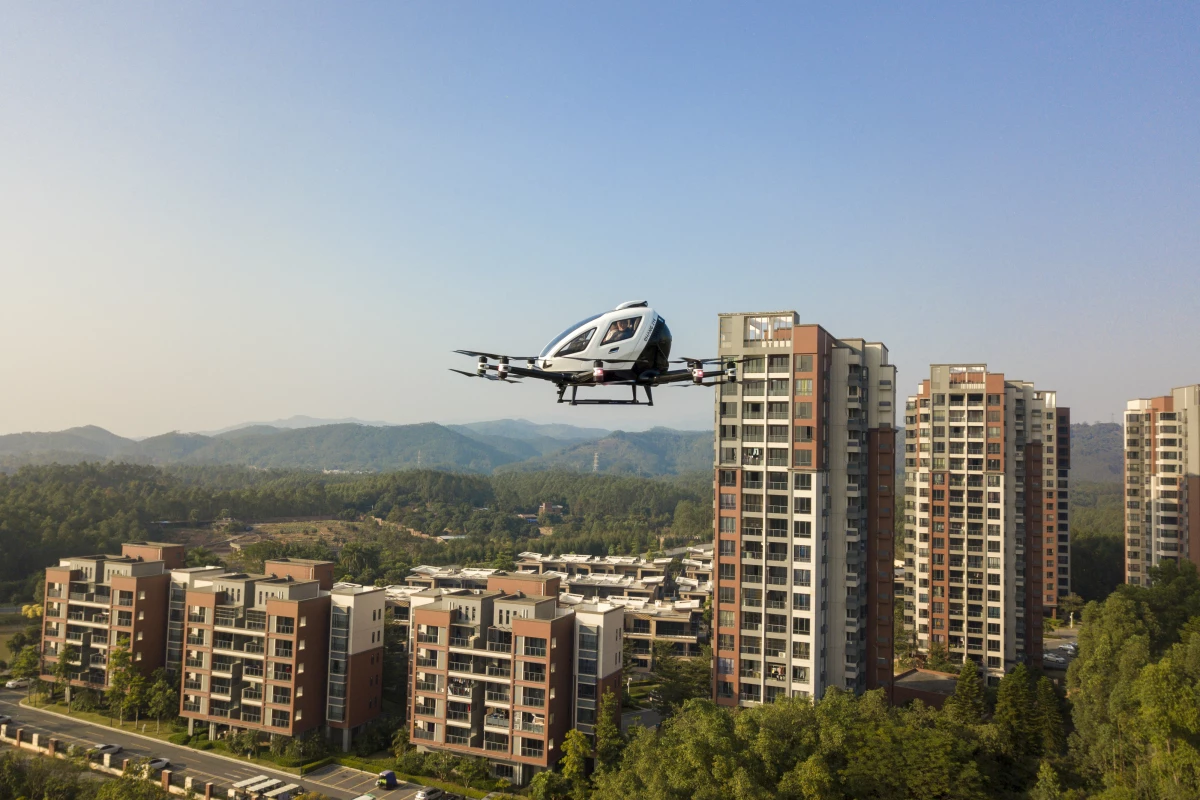China's air mobility company EHang has added another location to its autonomous air taxi roster with the launch of an aerial sightseeing trial in partnership with real estate company Greenland Hong Kong.
Initially, the service trial involving EHang's two-passenger autonomous aerial vehicle will take place at Greenland's tourism real estate project in the city of Zhaoqing, in the Guangdong Province of south China.
EHang will operate a flight base in the Forest Lake project, which is located in an area that includes seven natural lakes and wetlands spread over 3 million square meters (over 32 million sq ft), and is quite close to a new airport that's under construction – the Zhaoqing-Pearl River Delta-Hub Airport.
Local residents will be offered the chance to view the area from above. The video below gives an idea of what to expect.
Pitched as being cleaner, quieter and safer than single-propeller helicopters, the EH216 features 16 independent rotors mounted in pairs around the passenger cabin. It can currently reach a top speed of 130 km/h (80 mph) and can stay aloft for 21 minutes between charges.
Both companies intend to open up low-altitude aerial sightseeing services in other cities moving forward, while EHang continues its rollout of global trials that have seen test flights undertaken in the US, South Korea, Dubai and Europe.
Source: EHang




